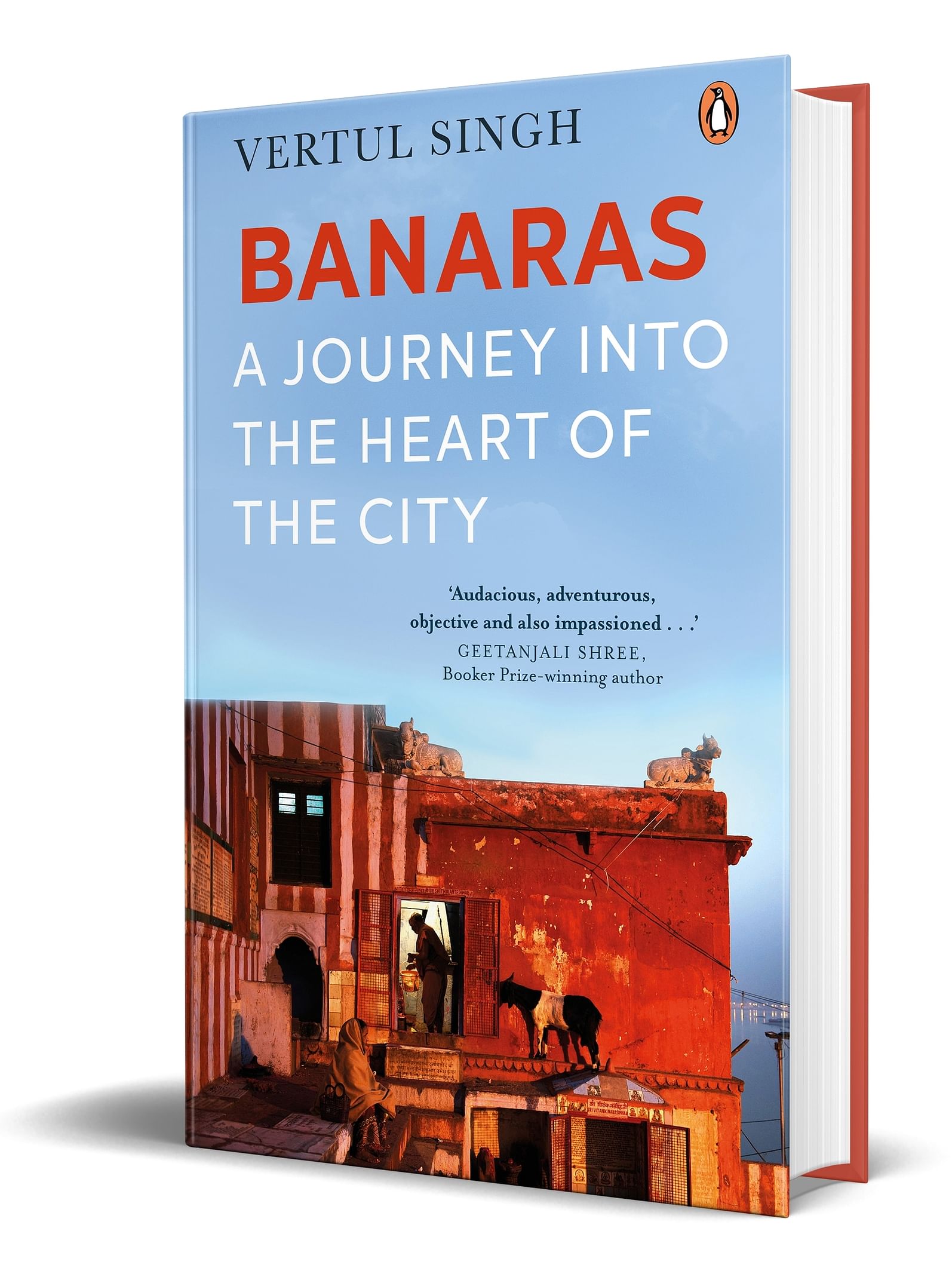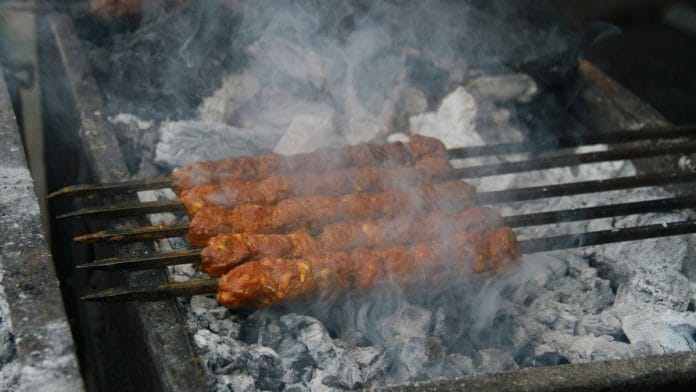The dishes that are mostly prepared in Banaras today started taking roots from the Gahadavala times and consolidated their hold over the Pakka Mahal area for the last 300 years. Rice was the staple crop in the twelfth century, as it is today. Puris were also greatly relished, and some aphorisms associated with puris at that time were poli panch (prepare the puris) and poli ulat-palat (deep-fry the puris). Sattu was consumed by mixing it with ghee and jaggery, and another proverb advises, sattu van ta puni san (if the sattu is not properly mixed, mix it again). Khichdi (dish made of rice and lentils), kheer (rice pudding), chana-chabena (a mixture of roasted grains) and several other types of sweets, like today, formed part of the regular meal plan of even the twelfth-century residents of Banaras. Banarasis, however, did not simply consume vegetarian fare. Meat of various animals and birds was prepared and aphorisms to that effect were in vogue. For example, a popular saying cautioned: Jaalen lage paali dhankan handi mansu chud, meaning to simmer the meat by covering it with a lid on fire. Consumption of a mixture of rice, salt, mutton and ghee has also been aphoristically described. Amazingly, till now, a popular assumption was that meat pieces on skewers called seekh kabab came with the Islamic invasions but going by the popular precepts of the twelfth century, salai masu griha, which means pleaching the meat on the skewers, one could safely assume that it was a popular dish much before. By the early eighteenth century, mentions of exotic dishes, vegetables and spices are found in Girivan Patmanjari of the Varadaraja and Girvana Vangamanjari of Dhundiraj. These food items are quintessentially Banarasi even now. In one conversation, a Brahmin directs his son to shop for supplies from the Chaukhambha market for the scrumptious preparations for a guest. He says: ‘First go to the Baniya’s shop and buy two and a half seers of ghee, white sugar, gram flour for puran poli, asafoetida, cumin, ground turmeric, betel nut, cardamom, clove, catechu, nutmeg, mace, camphor, kasturi (musk), saffron, gorochan (cow bezoar), khus (resin incense)—also known as Sunganghwala and Dasang Dhoop—kappadchhan (perhaps a brand of that time) flour, dhuvaans (coarse black lentil) and chauretha (rice flour).’ Then, he further directs his son to go and buy vegetables like suran (elephant yam), white and red kanda (tuber), cucumber, elderberry, mustard, pumpkin, yellow pumpkin, pointed gourd, brinjal, ivy gourd, bitter gourd and jackfruit. He then specifically directs his son to purchase ripe and unripe bananas, banana bunches and flowers from the shop near Annapurna temple. After taking the magahi betel leaves, he should proceed to Kal Bhairav market to buy the greens like fenugreek leaves, chaulai, poi, chakwad (all varieties of greens called saag) and Indian nightshade called brishti bhanta, red and white taro root leaves along with tamarind, ginger and banana leaves. Important markets like the Chaukhambha, Kal Bhairav and the lanes adjoining Annapurna temple mentioned above, still cater to these things and are really coveted. In Girivan Patmanjari, there is an exhaustive description of food items that has been served to a student monk. The monk then describes in detail and lists out food dishes and their sequences of serving. Let me briefly touch upon the description. The student monk firstly elaborates on a large banana leaf and sal leaf bowls, pickles of raw mango, tamarind, kabak (a kind of mushroom pickle), lemon, lime, orange and wood apple. Then rice combinations of dahi-bhat (curd rice), urad-bhat (black lentil rice), khatta-bhat (sour rice), ghee-bhat (clarified butter rice), pulses and sweets.
There is a more elaborate description of this food in Girvan Vangamanjari of Dhundiraj, though. The Brahmin directs his wife how to serve sequentially all the food prepared by her to the guest: after greasing the banana leaves with ghee and serving salt, serve the pickles of mango, lemon, ginger, elephant yam, plum, brinjal, cranberry, gooseberry, radish, myrobalan, bamboo shoot and Indian nightshade. Then, serve a salad mishmash of banana blossoms, bottle gourd and muskmelon, followed by the vegetables of bitter gourd and carrot. After this, pure urad dal vada (vada is coarsely ground and fermented pulses fashioned into various shapes and deep-fried in ghee), fenugreek puffs, tilbadi (sesame seed puff), kohendauri (spiced white pumpkin puffs), aambari (mango puffs), pumpkin seeds puffs, black lentil puffs in curd, and papad with currant sauce. Thereafter, laddus of chickpea gram flour with ghee and curd, fenugreek seeds with jaggery. After all this, a very fine variety of boiled rice is to be served with pigeon pea soup, followed by puran poli, millet laddus, sweet rice flour breads, puris, pancakes of rice flour and chickpea, khoya puris, sesame laddus, bean lentil laddus and milk sweets. He directed her to serve seven types of kheer made of wheat, rice and tinni, and spicy decoction for digestion with a green chilli to be served at the end. The betel quid is customarily served when guests are leaving. The entire description and types of food are still in vogue in Banaras, with the same extensive and minute details. Raja Jainarayan Ghoshal, a great connoisseur of fine taste himself, while describing the Budhwa Mangal Festival in 1857, listed some mouth-watering savouries of Banaras:
matichoor paanitooya khaaja aadanrasa,
magdal besan laadoo sangan pachhand,
peda baraphee bundiya michharee cheeneekand
chhoharee kachauree puree sab dravy taaja
morabba aachaar shaak tarakaaree bhaaja
Banaras has this quality, which it has retained even now, that if you want to eat a particular sweet or snack that is available only in, say winter, you will never get that in summers. Even today, when everything is available all through the year, frozen and preserved, the Banarasi cuisine will never compromise on the seasonal ingredients. Even average households relish the seasonal preparation. Banarasi sweetmeat-makers are called karigars (artisans), which shows how much respect they are given. Otherwise, the commonly used word is halwai.
 This excerpt from Banaras: A Journey Into The Heart of The City by Vertul Singh has been published with permission from Penguin Random House India.
This excerpt from Banaras: A Journey Into The Heart of The City by Vertul Singh has been published with permission from Penguin Random House India.






